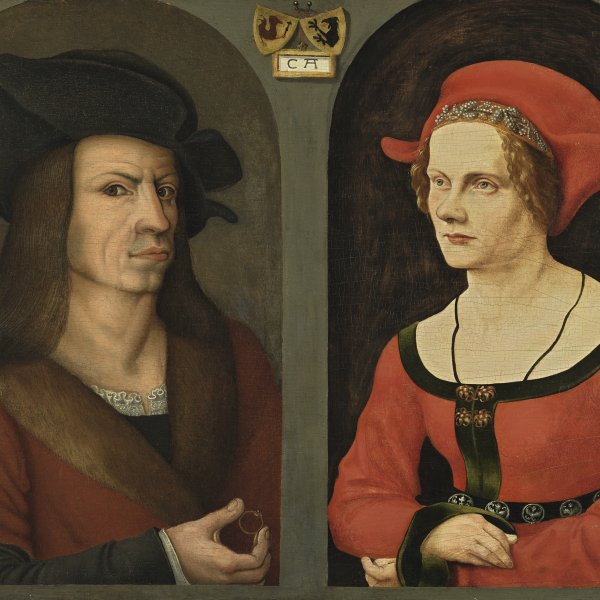Jörg Breu the Elder and an Anonymous Painter
Breu trained in his native city with Ulrich Apt the Elder, in whose workshop he is documented from 1493. In 1500, before moving permanently and as an independent master to Augsburg, Breu made a trip to Austria during which he executed altarpieces for the Stiftekirche in Zwettl, the monastery at Aggsbach and the church at Melk. These early works, which are among the first examples of the Danube School, reveal an interest in nature and the depiction of landscape as well as the painting of Jan Polack and Martin Schongauer and Dürer’s prints. In 1502 Breu was back in Augsburg where he established his own workshop and hired apprentices, among them his brother Klaus. Breu is noted for his versatility as a painter, producing religious and history paintings, decorative frescoes and designs for prints and stained glass. His most important commissions came from the Fugger family in Augsburg for whom he executed the decoration of the wings of the organ in their family chapel in the church of Saint Anne (in situ) and the frescoes on the rear façade of the Fuggerhaus, of which some fragments have survived. We also know that Breu participated, along with Ulrich Apt the Elder and other artists, on the exterior decoration of the Town Hall of Augsburg (now lost). Breu’s late works reveal an interest in Mannerism and use a bold, vibrant colour range, more exaggerated expressions and pronounced folds in the drapery of his figures. Also notable from this period are the works that the artist produced for Duke William IV of Bavaria: The Story of Lucretia and The Battle of Zama (both Alte Pinakothek, Munich). On his death in 1537 his son, pupil and assistant, Jörg Breu II, took over the direction of the workshop.





